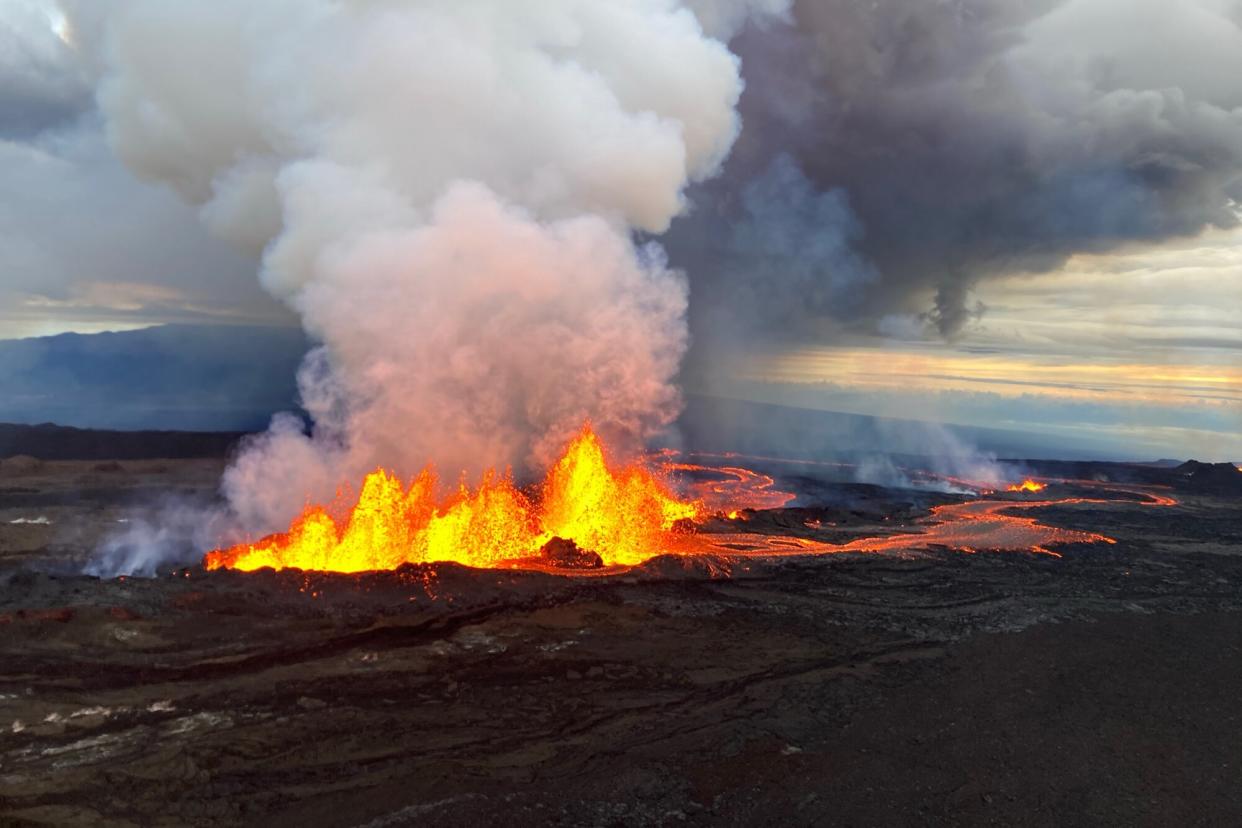Falling Glass 'Hair' Named for Hawaiian Deity, Lava and Vog: What to Know About Mauna Loa Eruption Hazards

United States Geological Survey/Handout/Anadolu Agency via Getty Mauna Loa
With eruptions from Hawaii's Mauna Loa volcano predicted to last for weeks, there are some hazards to watch out for — even though lava flow is not currently a threat, according to officials with the Hawaiian Volcano Observatory.
Mauna Loa, the world's largest active volcano, erupted on Sunday for the first time in nearly 40 years. By the following day, lava could be seen shooting nearly 200 feet into the air.
As of Wednesday, the Hawaii Emergency Management Authority said that "seismic activity has stabilized," and that at current lava flow rates "it would take at least 46 hours to reach the road," although they warned that the lava could still shift directions as it reaches "flatter ground."
According to CBS News, it could take at least a week for lava to reach populated areas.
Still, the National Weather Service has warned that volcanic gas, fine ash and thin glass fibers created during the eruption, also known as "Pele's hair," can be carried throughout the region by winds.
RELATED: See Dramatic Footage of Mauna Loa Volcano Erupting on Hawaii's Big Island
Pele's hair is formed "when gas bubbles burst in the lava," according to the Hawaiian Volcano Observatory. After getting "propelled violently into the air," the bits of fluid lava get stretched to became "long, hair-like strands that cool to a golden-colored glass."
The hair-like glass particles get their name from Pele, a revered volcano deity who "is both destructive and creative" — and is "considered ʻohana (family)," per the National Park Service.

imageBROKER/Alamy Stock Photo Pele's Hair seen after the eruption of the Kilauea volcano in Hawaii Volcanoes National Park
Since they're so light, park officials warn that the strands, which are very sharp, can easily get carried by the wind and "accumulate in low-lying areas and form dense mats many inches deep."
"While fragile and brittle, they are also sharp. As tiny pieces of glass, they can become lodged in human skin and much worse, eyes," NPS officials wrote. "Caution around the fibers is necessary to avoid injury from the slivers."
"You wouldn't want to be digging your hands in it because you could get a cut," Aaron Pietruszka, an associate specialist at the University of Hawaii's Department of Earth Sciences, told CBS News.
RELATED VIDEO: Hawaii's Mauna Loa, the World's Largest Active Volcano, Is Erupting For First Time in 38 Years
Fortunately, they don't typically carry very far from volcanic vents, according to the outlet.
Dr. Libby Char, the director of the Hawaii Department of Health, told CBS News that wearing an N95 or KF94 mask would help prevent injury from the sharp glass strands.
Never miss a story — sign up for PEOPLE's free daily newsletter to stay up-to-date on the best of what PEOPLE has to offer, from juicy celebrity news to compelling human interest stories.
After the eruption started, an ashfall advisory was issued for the island, warning residents that up to a quarter inch of ash could be carried downwind from the eruption, but was canceled just hours later.
Still, health officials have urged local residents to limit any strenuous outdoor activities due to volcanic smog, also called vog, which is created when sulfur dioxide combines with other particles, per CBS News. The outlet reported that vog can cause eye irritation, headaches and sore throats, and can also require hospitalizations for those with respiratory issues.
Scientists with the U.S. Geological Survey said the volcano — which has been dormant since 1984 — has emerged from its "longest quiet period on record." During that last eruption, the lava flow came within 4.5 miles of the island's largest population center.

 Yahoo Movies
Yahoo Movies 
